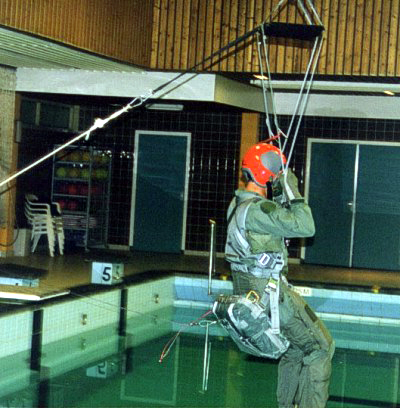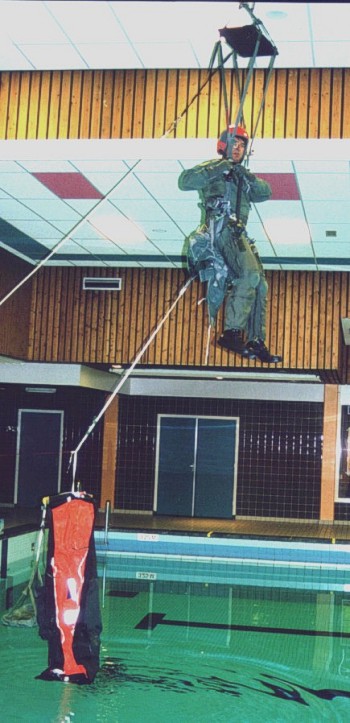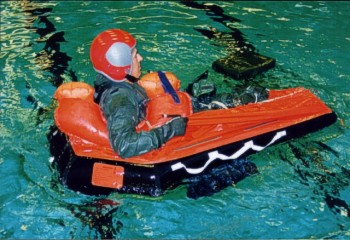
Flightgear Online was
invited to attend a dinghy drill for Royal Netherlands Air force F-16 pilots. This drill
takes place once a week at a special prepared civilian swimming pool near one of the major
airbases.
 The Setup The Setup
Arriving at the pool before operational flying hours gives the pilots and instructors the
full use of the remainder of the day. The instruction team has to prepare the gear and
make sure enough sets of drilling gear are present. The pool is equipped with a winch in
the ceiling. Connected to the winch cable is a parachute like assembly. This piece of
equipment is fitted out with the original risers as can be found on the F-16 parachute.
The pilot is dressing himself in the full flying gear, flying suit, torso harness with
LPU-3/P, CSU-13B/P NL, HGU-55/P helmet without visor, MBU-12/P mask and boots. All the
gear used is specially prepared for drill purposes and is made from rejected operational
gear.
The Drill
The pilot is attached to the risers and on his harness the seat pack with life raft is
connected. The pilot then takes a sitting position and is pulled up in the air above the
pool. The instructor gives the starting signal and the boat is automatically released from
the seat pack. During the following minute, the pilot has to undo his mask, inflate the
LPU-3/P and has to check his position. After ditching the pilot has to release his
parachute risers. Although Sea Wars and U-Wars automatic water releases are fitted to the
harness, manual release has to be practiced. It has happened that Sea Wars would not open
because of the water condition. The water has to have a certain degree of pollution before
the releases are activated. With all environmental changes, there are areas with to clean
water. U-Wars will work under all conditions. Next step is to enter his life raft being
the Beaufort Mk.17H. At the end of the session, the instructor will work his way through
the drill together with the pilot. Every pilot, active or not, has to train this dinghy
drill every three months. All sessions are signed for and entered in the pilot's personal
log. It is possible for a pilot to loose his authorization to fly if he did not attend the
drills in time. The instructors can throw in special surprises as non-opening boats, masks
that do not release and even nighttime drilling can be practiced.

|